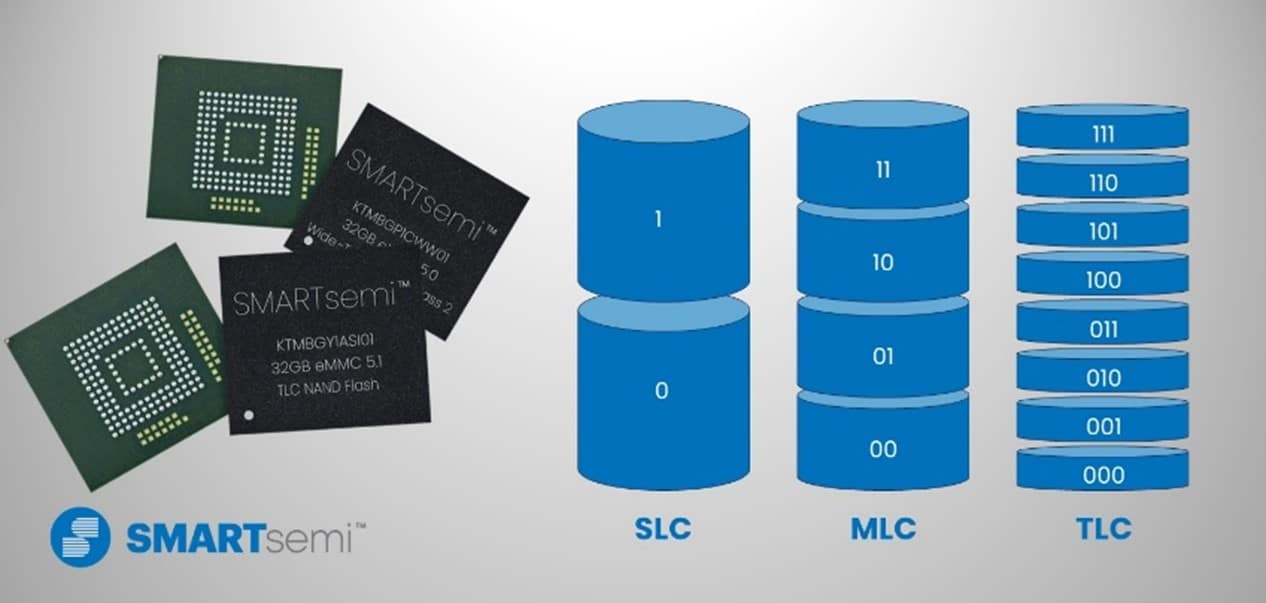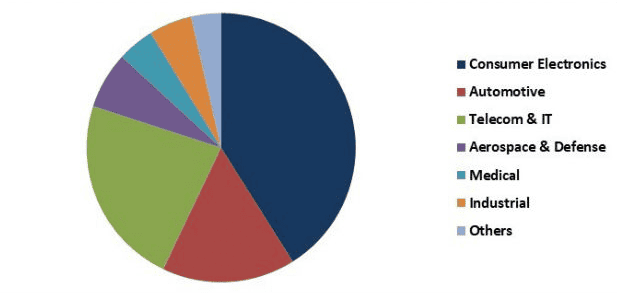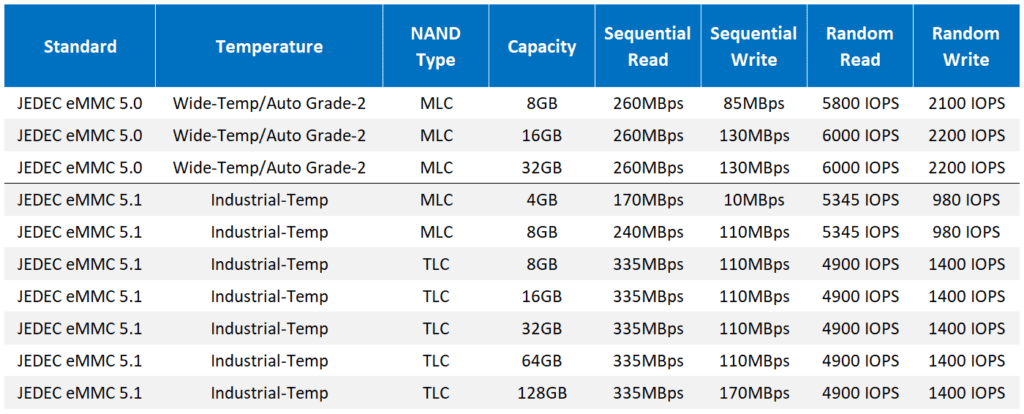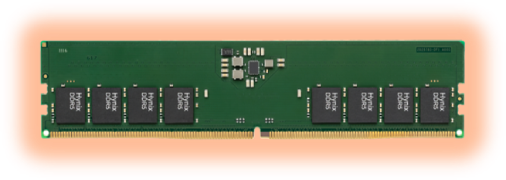The Types of NAND Flash Memory

Over the past decade, more than a petabyte – this is 1 million Gigabytes – worth of NAND flash memory has been shipped across the globe. Invented almost 40 years ago, NAND storage products are a commodity today, used in most commercial electronics like smartphones, tablets, and game consoles. NAND flash memory doesn’t need power to retain data, making it very suitable for portable, internal, and external devices. Before the widespread use of flash memory, data storage was primarily entrusted to magnetic media like floppy or hard disks. Compared to flash storage, magnetic devices take longer to read and write data, which became a limiting factor when processing speed increased. In fact, the name ‘Flash’ is believed to refer to the speed with which the memory contents could be erased: as fast as the ‘flash’ of a camera.
NAND-Flash in the Storage Universe
Generally speaking, memory is categorized as Volatile or Non-Volatile. Dynamic Random Access Memory (DRAM), like SMARTsemi’s DDR4 SDRAMs, are characterized by high-speed performance making them ideal for operational memory they are volatile because without power, they lose their data. By contrast Non-Volatile Memory (NVM) retains data even without power making them ideal storage devices. There are many types of NVMs. The electrically erasable memory components branch that evolved to NAND Flash includes Mask Read-only Memory (Mask ROM), Programmable ROMs (PROM), Erasable PROM (EPROM), Electrically EPROM (EEPROM), and FLASH Memory. Flash differs from EEPROMs principally because it must be erased in blocks and its storage capacity is higher.
There are two types of FLASH memory – NOR and NAND. NOR is characterized by high-speed random access read and write to as little as a single byte of data. NAND by contrast reads and writes blocks of data sequentially at high speed and compared to NOR, reads faster than it writes.
The global market for non-volatile memory reached $74.6 billion in 2022 and is projected to reach $121.4 billion by 2027(1).The markets for NVM(2) largely align with the markets supported by SMARTsemi, including communications, networking, automotive, defense electronics, medical equipment, industrial robotics home consumer electronics.

Floppy to Flash
Based on solid-state technology, flash memory applies an electrical charge to write 1s and 0s. Compared to its magnetic predecessor, the floppy disk, flash storage evolved to become smaller, quieter, less expensive, and less volatile. Flash memory components are also more shock and vibration resistant because they don’t have sensitive, moving parts. All these advantages accelerated the adoption of NAND flash since it was first brought to market and has spurred the development of different types of NAND for different applications.
Types of NAND: SLC, MLC, TLC
Compared to its sibling, NOR flash, NAND has much higher endurance, lower cost per bit, higher density, and much faster write and erase times. Depending on the method of data storage, four types of NAND flash can be distinguished: single-level cell (SLC), multiple-level cell (MLC), triple-level cell (TLC), and quad-level cell (QLC).
In SLC NAND, each cell stores one bit, resulting in two possible states: 0 or 1. With only two possible states, it is easy and quick to determine what the state is. The number of Program-Erase (P/E) cycles of SLCs is typically in the range of 100,000. That is the highest of all NAND types and thus also the NAND technology with the best endurance. The downside is the low storage capacity and higher cost per bit. Its high performance, reliability, but also price make SLC NAND popular in mission-critical industrial applications requiring endurance and speed.
Two bits per memory cell in MLC means the number of possible states doubles from two to four: 00, 01, 10, and 11. MLC’s lower price tag and higher bit rate make it the NAND flash of choice for many higher-quality consumer, industrial, and automotive products. Consumer-grade MLC can handle about 10,000 P/E cycles, while the enterprise version (eMLC) can take around 20,000 to 30,000 write cycles.
Next in line is TLC, triple-level cell (sometimes referred to as MLC-3 or 3-bit MLC). At three bits per cell, TLC can hold eight possible states. TLC can store larger volumes of data than MLC, but processing speeds are lower. The higher capacity and lower cost are offset by lower performance, reliability, and longevity with 3,000 P/E cycles. While significantly less than MLC’s P/E rate, it is still more than enough cycles for most commercial electronics. TLC is a cheap option for applications that don’t need to last as long and where reliability is less critical. The continuous drive towards lower cost/GB NAND devices has led to QLC, boasting four bits per memory cell, and 3D NAND, where cells are stacked. Both have a very high memory density and storage capacity at relatively low cost.
Raw or Managed
At the top level, supply chain professionals can opt for raw or managed NAND. All NAND components need an internal or external host controller and firmware (ECC, FTL, etc.). Raw NAND flash requires external management, while managed NAND flash has memory management incorporated into the package, making design-in easier.
Embedded MultiMediaCard (eMMC) components are managed devices that integrate high-capacity NAND flash, typically MLC or TLC, with a MultiMediaCard (MMC) controller in a single 153-BGA package. The integration, compactness, and ruggedness of eMMCs makes them the component of choice for many networking, communications, defense, medical, robotics, and automotive applications.
SMARTsemi eMMCs
SMARTsemi offers a variety of eMMCs with a range of performance, capacity, and operating temperature options.

SMARTsemi is your supply chain partner for DRAM components, eMMC solutions, and SD/microSD Flash Memory Cards for long-life applications. With 20+ years of industry experience, we understand your challenges and have aligned our priorities with yours to simplify your memory chip supply chain for the long run. We know what you need before you need it. Get a jump start and request a sample today.







